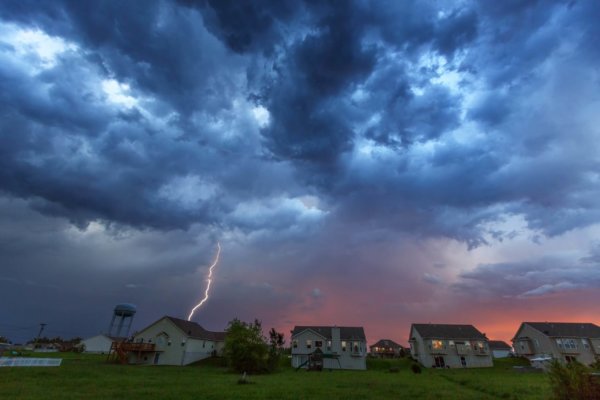6 Common Toilet Issues and How To Know When You Need a Plumber
Toilets typically don’t require much to keep them working properly. That said, there are a number of different issues that can keep your toilet from flushing, cause it to overflow, or lead to leaks. Today we’re going to take a look at some of the most common toilet issues and how to know if your problem needs a plumber.
1. Leaky Toilet Flapper
The toilet flapper is a large rubber stopper located at the bottom of the toilet tank. It works to seal off the tank so that water can’t constantly flow into the bowl. When you flush the toilet, the flapper opens to allow a certain amount of water into the bowl. Once the water level inside the tank drops to a specified level, the flapper closes so that no more water flows.
It is common for a toilet flapper to wear out and become brittle or cracked, preventing it from sealing properly. If your home has hard water, the flapper may become coated in mineral deposits, which will also affect the seal. If the flapper doesn’t fully seal, water will constantly leak out of the tank into the bowl. While this may not sound like a big issue, a leaky flapper can result in up to 200 gallons of water wasted daily. If left unchecked, this problem could easily cost you several hundred dollars a year.
The most obvious sign of a leaky flapper is hearing the toilet run when it’s not in use. Whenever water leaks out of the tank into the bowl, the toilet will occasionally need to run to refill the tank. You can also check for a leaky flapper by putting a few drops of food coloring into your toilet tank. Wait approximately 15 minutes, then check to see if the water in the bowl is colored. If so, it usually means the flapper is worn out and needs a replacement.
Replacing a toilet flapper is a simple task that only takes a few minutes. If you decide to replace the flapper on your own, make sure you use the right type, and adjust the chain so that the flapper seals securely and the tank fills to the correct level.
2. Broken or Misadjusted Float
Older toilets typically use a rubber float to measure the water level inside the tank. When you flush, the float arm raises the flapper to allow water to flow into the bowl. Once the toilet is flushed and the bowl refills, the flapper then closes. As the tank refills, the float eventually rises to the point where it triggers the fill valve to shut off so that no more water flows into the tank.
If the chain that connects the float to the flapper isn’t the correct length, it can prevent the tank from filling enough or cause too much water to flow into it. The chain can also become disconnected, preventing the flapper from opening and making it so that the toilet can’t flush. Replacing or readjusting the float or chain is another simple fix that usually doesn’t require a plumber.
3. Tank Leaks
If you ever notice water pooling around the sides of your toilet, it indicates a leak in the tank or underneath the bowl. If you suspect your toilet tank is leaking, you will want to feel around the underside of it where the bolts secure it to the toilet bowl. If you feel any water, it means either the bolts aren’t tight enough or the rubber gasket that seals around them is worn.
You can try to carefully tighten the bolts to see if this fixes the leak. This task requires shutting the water off and completely draining the tank. The next step is to use a screwdriver and a socket wrench to tighten the bolts. Unfortunately, this job is often difficult because the nuts underneath the bowl are recessed and tough to reach. It is also hard to access the bolt on the side of the toilet closest to the wall, and you will usually need to lie on your back or straddle the bowl.
If tightening the bolts doesn’t stop the leak, the rubber gaskets are likely worn out, and the bolts must be replaced. A new set of tank bolts will always include new gaskets to ensure a watertight seal around the area where the bolts go through the bottom of the tank. Replacing the bolts isn’t all that difficult, but it can sometimes take much longer than expected.
If you decide to do this on your own, you must be extremely careful not to overtighten the bolts. Doing this could easily crack the porcelain. Should this happen, you will need to have your entire toilet replaced. For this reason, this is one job that we always recommend leaving to the professionals.
4. Worn-Out Wax Ring
The wax ring is located on the underside of the toilet bowl and works to seal around where the bowl meets the drain pipe. Wax rings become worn out over time, resulting in water leaking out from around the base of the toilet. In some cases, you may not see any leaks but notice that the floor around the toilet is soft or spongy. This issue can also cause your flooring to warp or buckle.
Replacing the wax ring is something you can do on your own, but we wouldn’t recommend it because it requires completely dismantling and removing the toilet. This job will typically take at least a few hours and has the potential to damage or break your toilet. There is also a chance that you could damage the drain pipe underneath the toilet, which is a much more serious issue.
5. Broken Toilet Flange
The toilet flange lies underneath the wax ring. It connects the toilet to the drain pipe, securing the toilet to the floor. As with the wax ring, the flange can sometimes wear out or break. Should this happen, you must have the flange replaced or use a flange repair kit. In either case, this is definitely a job that is best left to a professional plumber because it also requires completely removing the toilet.
6. Loose Toilet
The bolts that secure the toilet to the floor will often become slightly loose over time, which leads to the toilet rocking or moving when you sit on it. This problem is easy to fix on your own as long as you are careful not to overtighten the bolts. First, you will need to remove the caps that cover the bolts. Next, use a socket wrench to tighten the nuts until you feel resistance. Again, do not use too much force or tighten them too far. If you do, the porcelain will crack, and the toilet will be permanently loose.
If you need any toilet repairs or other plumbing services in the Sacramento area, Crystal Blue Plumbing, Heating & Air is ready to help. We specialize in all types of plumbing, drain, and sewer repairs and installations, and we also have a team of certified HVAC technicians to take care of any of your heating and air conditioning needs. To schedule a toilet repair or another plumbing or HVAC service, give Crystal Blue Plumbing, Heating & Air a call today!








